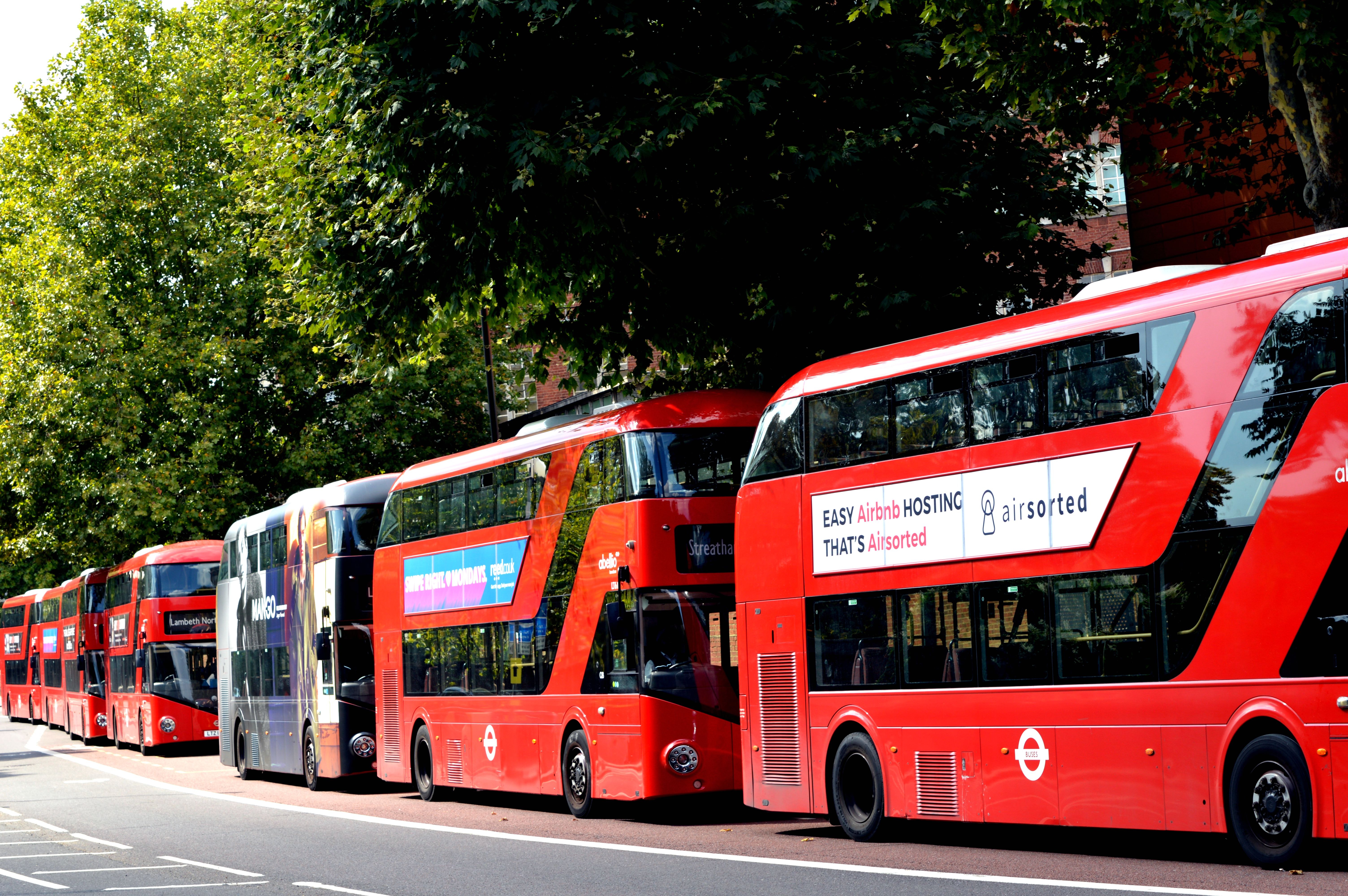As of April 2021, there are approximately 7.8 million public transportation commuters throughout the United States. New small business owners have a valuable opportunity to reach this large number of consumers, who take the same route daily via a transit advertising campaign.
Read on to learn more about transit advertising and why it should be considered a part of a business's media plan, particularly one new to marketing.
Transit Advertising Defined
Transit advertising exists throughout all real estate and vehicles associated with public transportation systems, including, but not limited to, stations, trains, busses, taxis, or transit shelters.
Transit advertising is a form of Out-of-Home (OOH) advertising that you encounter when you depart your house. OOH advertising is ubiquitous in today's marketing environment because it is the top marketing mechanism for online conversions. In fact, by this year's end, OOH advertising is expected to have risen by almost 15 percent.
With an impression pool of over 100 billion, OOH's ability to boost online sales, acquire new customers, and reinforce recall is an enticing advertising option for new businesses. Transit advertising is particularly effective.
Transit Advertisement Types
There are two general types of transit advertising:
- Inside: An advertisement placed inside a public vehicle or a transit shelter is the first type of transit advertising. Commuters who use buses, subways, trains, streetcars, ferries, or taxies and who see an ad on the inside walls of the depot stations or vehicles engage with inside-transit advertising. These ads can be in the form of posters or fliers, digital ads (on video screens), or even audio ads heard over speakers.
- Outside: The second type of transit advertising is external. Commuters who view an advertisement on the outside surface of a public transit vehicle or a transit shelter interact with outside-transit advertising. For instance, an ad placed on the roof, side, back, or front of a taxi cab or bus is a form of outside transit advertising, as is a similar ad posted on the outside of the physical transit shelter structure.
Each type of transit advertising yields significant benefits for conversions and ROI.
Transit Advertising Benefits
High Levels of Exposure
The first significant advantage of transit advertising is consumers' high levels of exposure to transit ads. Consumers who rely on public transportation spend a great deal of time commuting. For example? The average trip time for those commuting via bus is around 45 minutes. For 45 minutes each day, sometimes multiple times a day, commuters are consistently exposed to an array of ads: A prime opportunity to engage with commuters to build brand awareness and consideration for products and services.
Additionally, OOH and transit advertising have evolved to include a digital format, the byproduct of which is a "direct-response" from consumers. This perfect union of engaging, digital content and high frequency makes transit advertising appealing.
High Impact for Target Audiences
The size of the audience exposed to a campaign, the frequency they see the ad, and their ability to recall the brand and the message are all critical performance metrics to determine campaign effectiveness. OOH is particularly effective in reaching elusive consumer groups. And Generation Z is the most elusive social group of all, from a marketing perspective. Only about 50 percent of Gen Z consumers have heard of three-quarters of the famous brands their older counterparts know well.
While the lives of Gen Z consumers have been defined and streamlined by technology, this generation does not prefer digital advertising; the sheer amount of online marketing they encounter can be overwhelming and frustrating. Gen Z consumers instead gravitate towards OOH advertising as their preferred medium. Couple this fact with data that shows 70% of Gen Z have not gotten their driver's licenses, and over a quarter of this group has no desire to obtain one, and you have a consumer pool perfect for transit advertising.
Additionally, Gen Z is on the cusp of becoming a massive consumer group, the largest in U.S. history. Businesses would be remiss not to consider the high impact that transit advertising can have on this group of consumers, especially since Gen Z is so receptive to "snackable" OOH content—web content that's quick and easy to consume and share, like transit advertising.
For a transit advertising campaign to be a successful component of a new business's marketing plan, it should be organized and streamlined by professionals in the media buying field who understand the intricacies of OOH and transit advertising.
MBI: Experienced Professionals
No one understands the nuances in developing a media buying plan better than the media strategists at MBI. Our experienced OOH team knows how to build a successful advertising strategy using transit advertising as the lead advertising tool, whether it's analysis or planning, negotiation or placement, or analytics. Contact us today to start developing a new media plan and see for yourself how experienced professionals can make all the difference, one transit ad at a time.
Other Sources:

